Begonia Dregei, a captivating member of the Begonia genus, is a botanical wonder that has captured the hearts of plant enthusiasts around the world. This unique species is known for its distinctive features, making it a prized addition to any plant collection.
Overview of Begonia Dregei
Begonia Dregei, commonly referred to as “Begonia Dregei,” belongs to the Begoniaceae family. Native to South Africa, this perennial plant is celebrated for its ornamental value and remarkable adaptability. With its charming foliage and intriguing growth habits, Begonia Dregei stands out as a versatile and visually appealing choice for both indoor and outdoor gardening.
Key Characteristics
Let’s delve into the key characteristics that define Begonia Dregei:
- Leaves: The leaves of Begonia Dregei are asymmetrical and strikingly serrated along the edges, featuring an attractive dark green hue. The unique spiral arrangement of leaves adds to its aesthetic appeal.
- Stems: The succulent stems of Begonia Dregei contribute to its hardy nature. These stems store water, allowing the plant to withstand periods of drought and making it a resilient choice for various growing conditions.
- Flowers: Although not the primary highlight, Begonia Dregei does produce delicate clusters of small, white to light pink flowers. The blossoms are subtle yet complement the overall charm of the plant.
- Size: Typically reaching a height of 12 to 18 inches, Begonia Dregei maintains a compact and manageable size, making it suitable for container gardening or as an accent in garden beds.
- Habitat: In its native habitat, Begonia Dregei thrives in the understory of forests, adapting well to shaded environments. This characteristic makes it an excellent choice for indoor spaces with filtered sunlight.

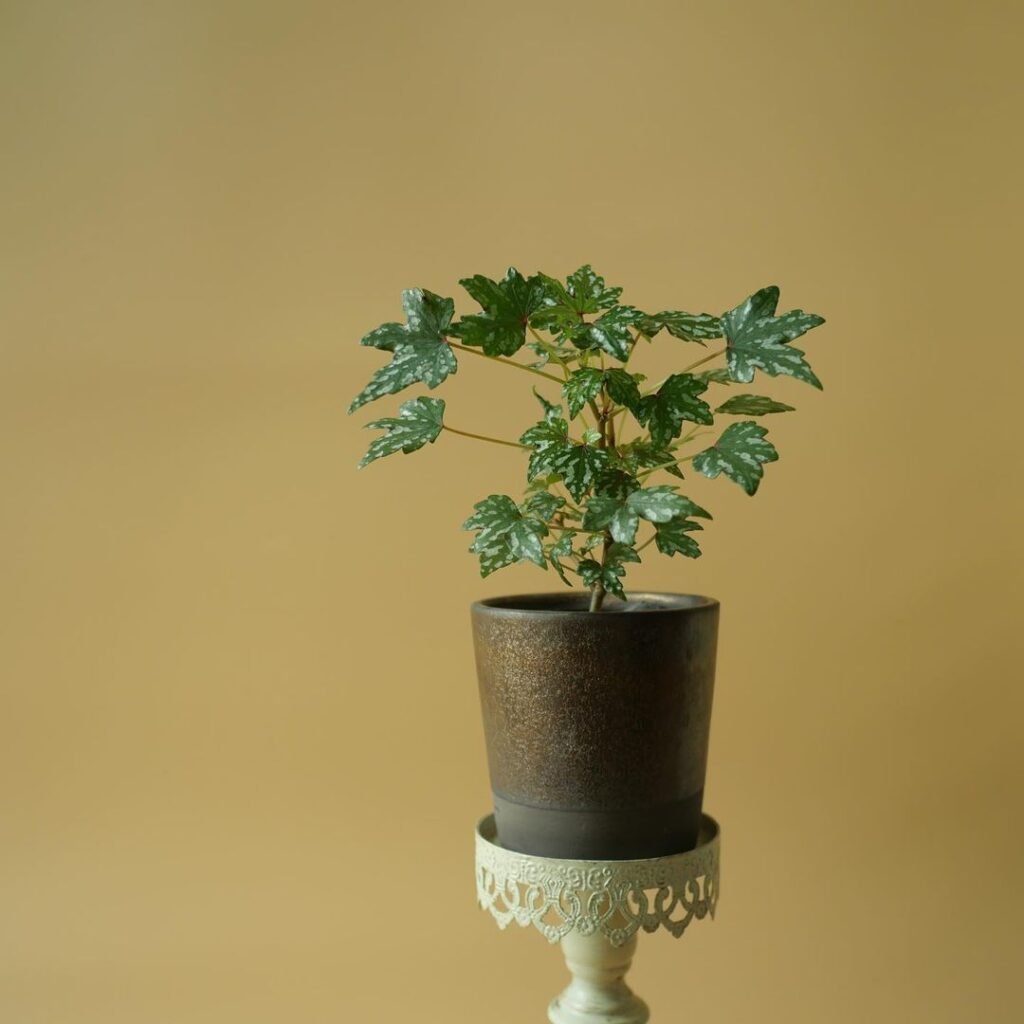

Genus Species
Understanding the scientific classification of Begonia Dregei involves exploring its genus and species. Scientifically, it is classified as follows:
Genus: Begonia
Begonia is a diverse genus that encompasses over 1,800 different species, each with its own unique characteristics. The name “Begonia” pays tribute to Michel Bégon, a French patron of botany. This genus belongs to the family Begoniaceae and is renowned for its ornamental value, encompassing both perennial and annual species.
Species: Dregei
The specific epithet “Dregei” is a nod to the German botanist Johann Franz Drege, who contributed significantly to the study of South African flora in the 19th century. Begonia Dregei, therefore, carries the legacy of its namesake, reflecting its origin and the rich botanical history associated with its discovery.
Understanding the genus and species of Begonia Dregei provides a deeper insight into its botanical heritage and aids in creating an optimal environment for its growth and development.
Begonia Dregei Appearance

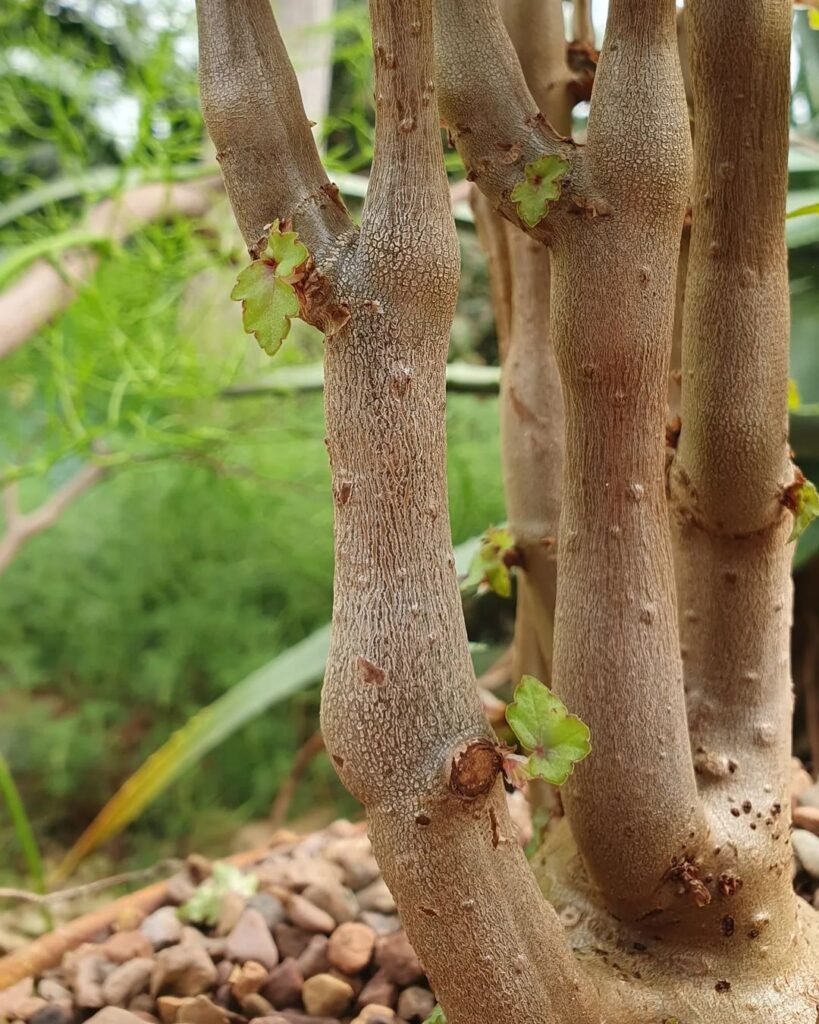
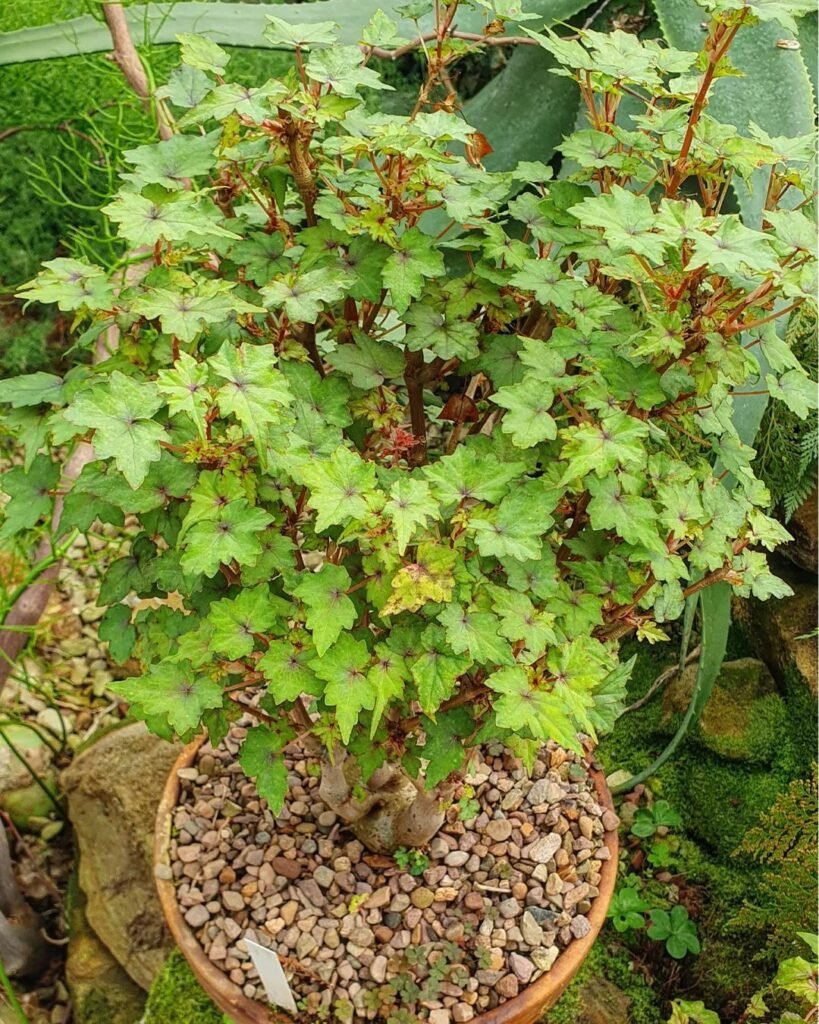
The allure of Begonia Dregei lies in its captivating appearance, characterized by distinctive features that set it apart in the realm of botanical beauty.
Foliage
The leaves of Begonia Dregei are a visual treat, showcasing an elegant dark green color and an asymmetrical shape. The serrated edges add a touch of uniqueness, creating a visually appealing contrast to the surrounding greenery.
Stems and Growth Habit
The succulent stems of Begonia Dregei not only contribute to its resilience but also add an interesting dimension to its overall appearance. The compact and bushy growth habit makes it an ideal choice for both indoor and outdoor settings, allowing it to thrive in containers or as part of a garden bed.
Flowers
While the primary focus is often on its foliage, Begonia Dregei produces dainty clusters of white to light pink flowers, adding a subtle yet delightful touch to its overall charm. Though not the main feature, these blossoms enhance the plant’s aesthetic appeal during the flowering season.
Size and Proportions
Begonia Dregei typically reaches a height of 12 to 18 inches, maintaining a manageable size for various gardening applications. Its proportions make it suitable for creating dynamic arrangements or serving as a focal point in both small and large garden spaces.
Color Variations
While the predominant color is dark green, variations in leaf coloration may occur, influenced by factors such as light intensity and soil composition. This natural variability adds an element of surprise, making each Begonia Dregei unique in its own right.
Not the plant for you? Check out my full list of 78 Types of Begonia!
Begonia Dregei Care Tips
Ensuring the optimal care for your Begonia Dregei is essential for maintaining its health and enhancing its ornamental value. Let’s explore some care tips to keep your Begonia Dregei thriving:
| Aspect of Care | Guidelines |
|---|---|
| Light Requirements | Place your Begonia Dregei in indirect, filtered sunlight. Avoid direct sun exposure, as it can scorch the delicate leaves. |
| Soil Conditions | Use a well-draining, peat-based potting mix to provide the ideal soil conditions. Ensure good aeration for the roots. |
| Watering Routine | Maintain a moderate watering routine. Allow the top inch of soil to dry before watering. Overwatering can lead to root rot, so find a balance. |
| Humidity Preferences | Begonia Dregei thrives in high humidity environments. Consider using a humidity tray or misting the plant to create the right moisture levels. |
| Temperature Range | Keep the temperature between 65-75°F (18-24°C). Protect the plant from drafts, as Begonia Dregei prefers a stable and warm environment. |
| Fertilizing Schedule | Feed your Begonia Dregei with a balanced liquid fertilizer every 4-6 weeks during the growing season. Reduce feeding in winter when growth slows down. |
| Pruning and Shaping | Trim leggy stems and spent flowers regularly to promote bushier growth. Pruning helps maintain an attractive shape and encourages new foliage development. |
| Propagation Techniques | Begonia Dregei can be propagated through stem cuttings or leaf cuttings. Ensure the cuttings have nodes, and use a rooting hormone for increased success. |
| Repotting Schedule | Repot Begonia Dregei every 1-2 years or when it outgrows its container. Use fresh potting mix and inspect the roots for any signs of disease or rot during repotting. |
These care tips serve as a foundation for cultivating a healthy and thriving Begonia Dregei. Remember to observe your plant regularly, as individual needs may vary based on factors like climate and local conditions.
Begonia Dregei Light and Soil Requirements
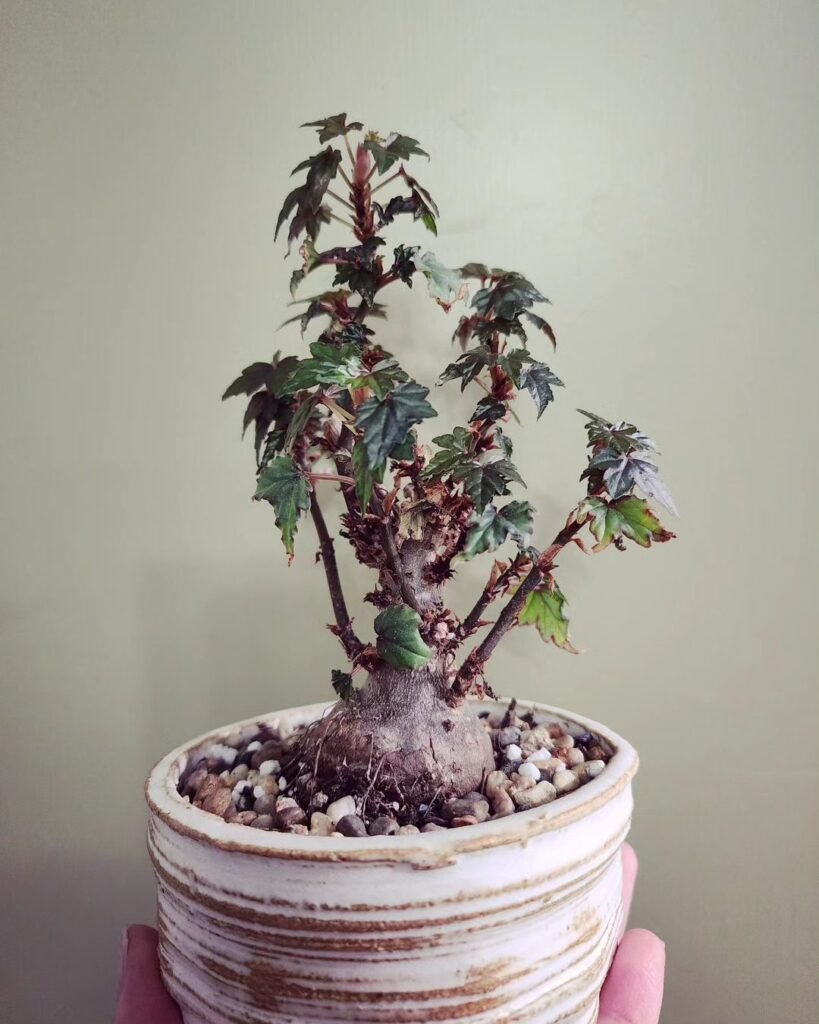


Light Requirements
Begonia Dregei, with its origins in the shaded understory of South African forests, exhibits a preference for indirect, filtered sunlight. When cultivating this begonia, it’s crucial to replicate its natural habitat. Position your plant where it receives bright, filtered light, avoiding prolonged exposure to direct sunlight, which can lead to leaf burn.
Soil Requirements
The choice of soil significantly impacts the well-being of Begonia Dregei. Opt for a well-draining peat-based potting mix to ensure proper aeration for the roots. The peat component retains moisture without allowing the soil to become waterlogged, a condition that can lead to root rot. Adequate drainage is key to preventing water-related issues and promoting a healthy root system.
Watering Begonia Dregei
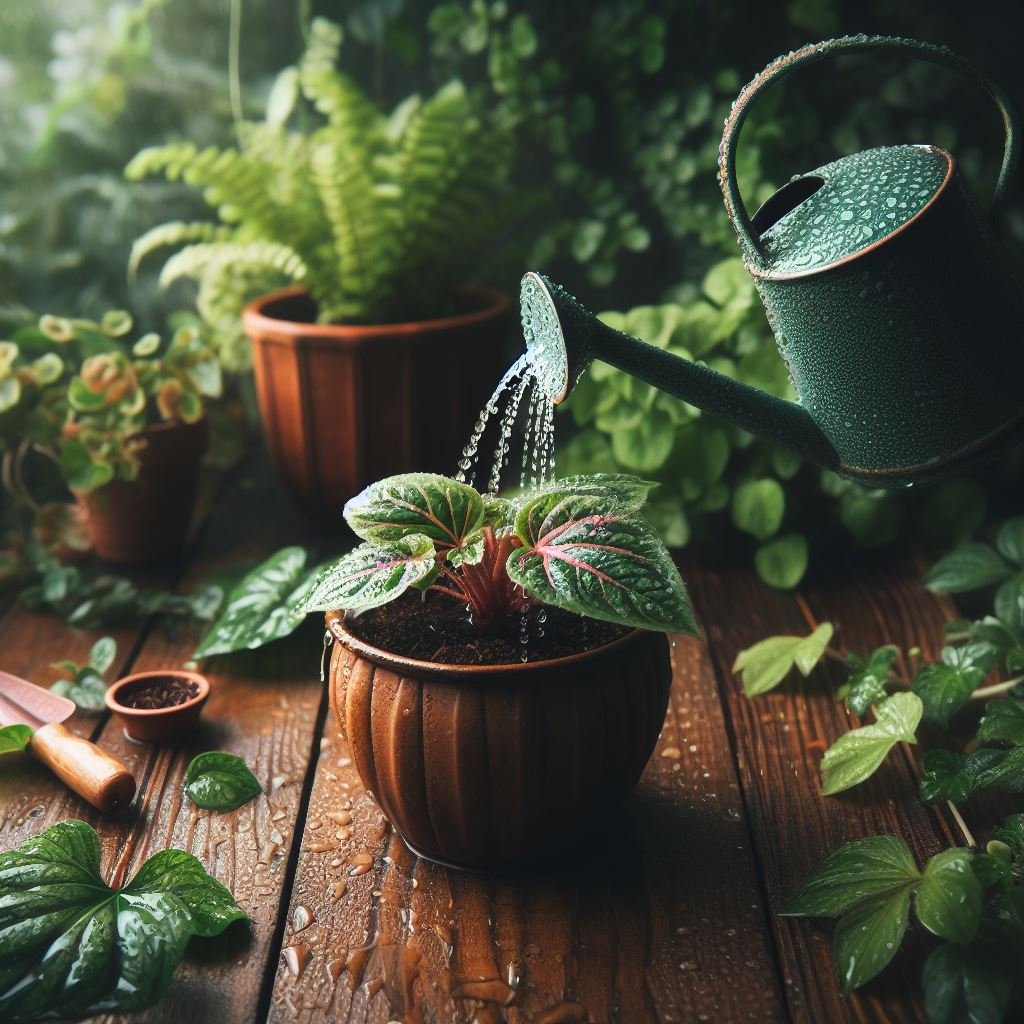
Proper watering is a cornerstone of Begonia Dregei care, contributing to its overall vitality. Understanding the plant’s water requirements and adopting a mindful watering routine are essential practices.
Watering Routine
Begonia Dregei appreciates a moderate watering routine. Allow the top inch of soil to dry out before watering, preventing the risk of overwatering. Stick to a schedule, but always consider environmental factors that may influence moisture levels, such as room temperature and humidity. Water the plant at the base to prevent water from settling on the leaves, as wet foliage can lead to fungal issues.
Signs of Underwatering and Overwatering
Knowing the signs of both underwatering and overwatering is crucial for responsive care.
Signs of Underwatering:
- Wilting and drooping leaves
- Dry, brittle soil
Signs of Overwatering:
- Yellowing leaves
- Soggy or foul-smelling soil
By paying attention to your Begonia Dregei’s water needs and adjusting your watering routine accordingly, you’ll foster a healthy and resilient plant.
Begonia Dregei Humidity and Temperature
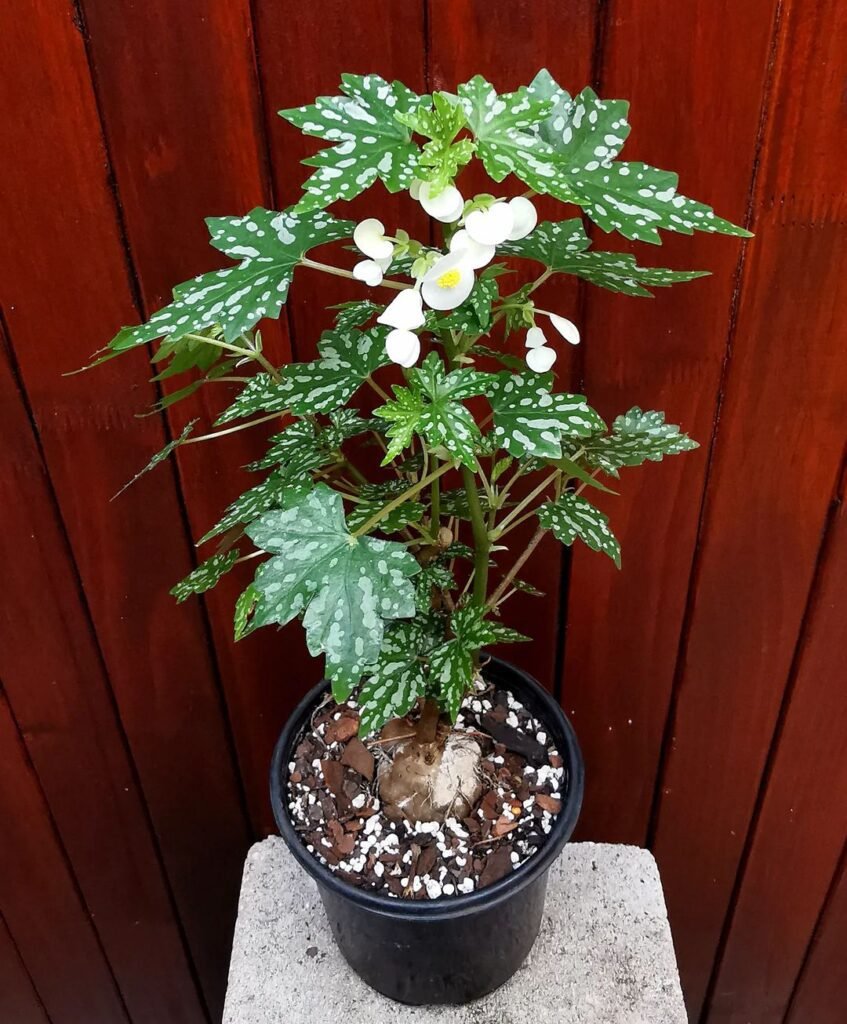
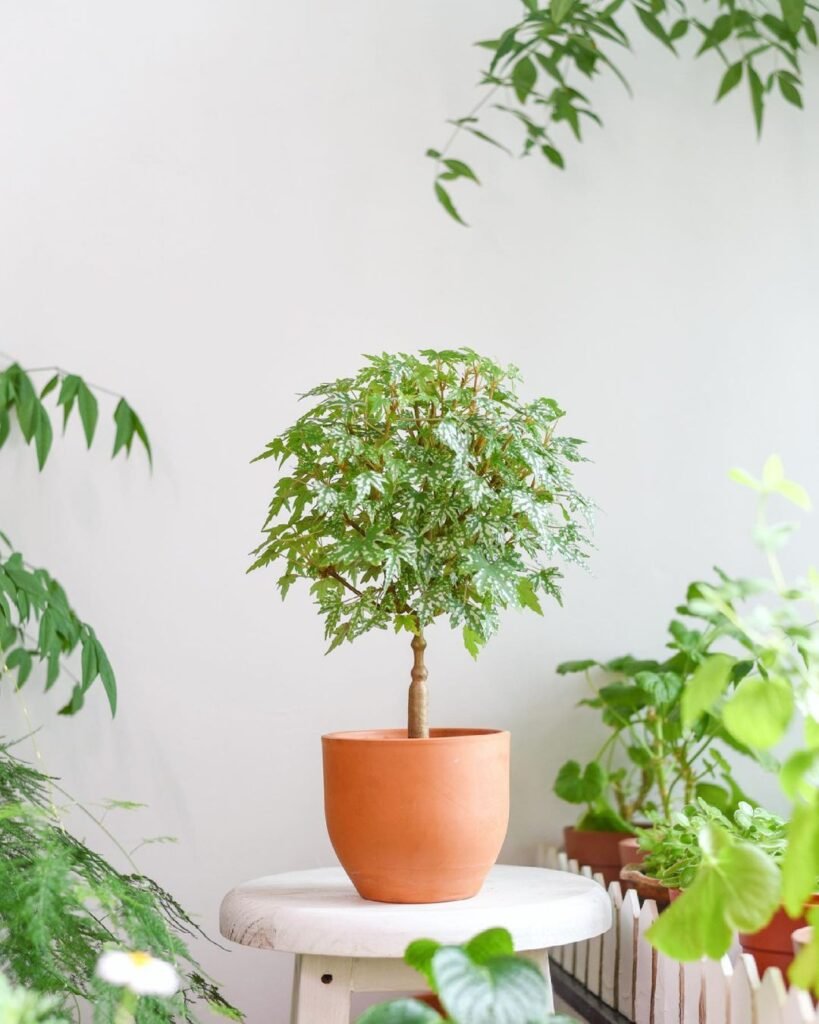
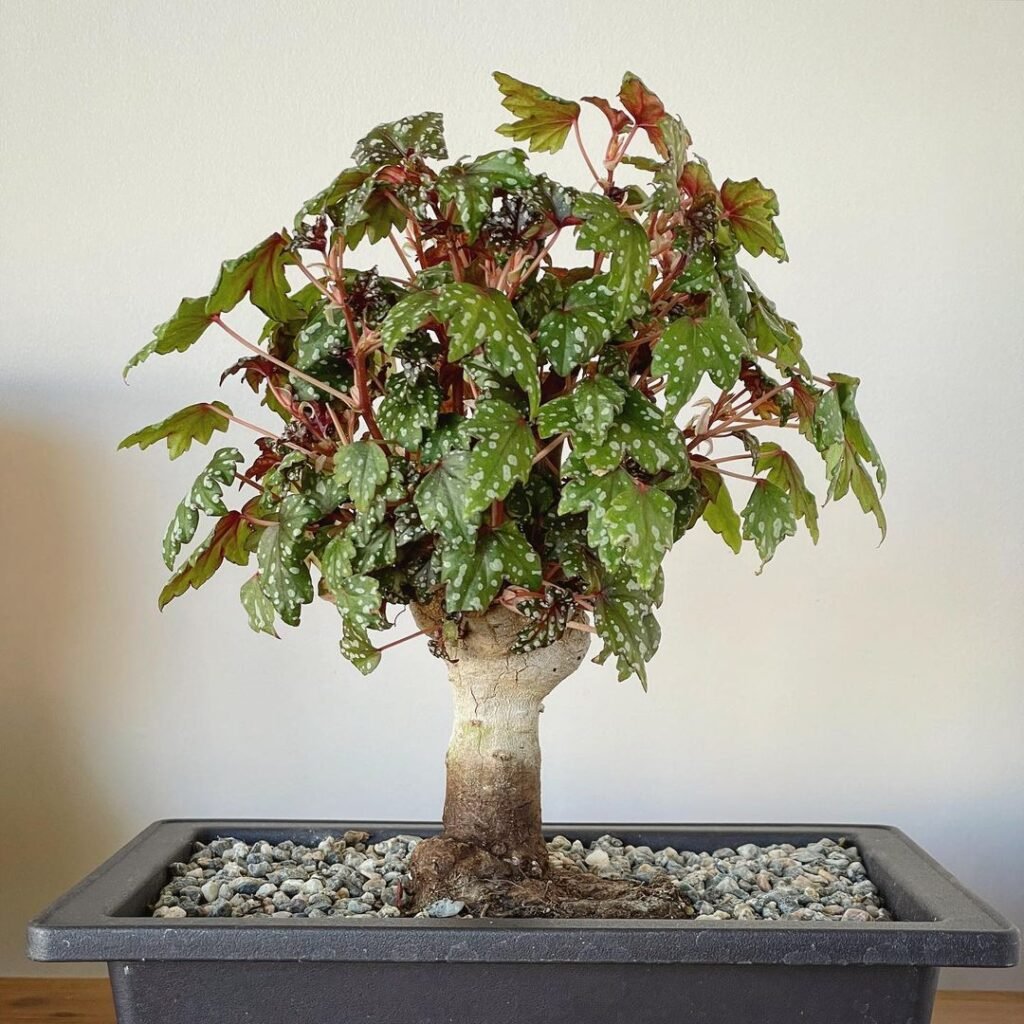
Humidity Preferences
Begonia Dregei, hailing from the lush forests of South Africa, thrives in environments with high humidity. To mimic its native habitat, consider placing a humidity tray near the plant or regularly misting the leaves. This extra moisture encourages optimal growth and helps prevent issues such as leaf dryness and browning.
Temperature Range
Maintaining an appropriate temperature range is vital for the well-being of Begonia Dregei. Ideally, keep the surroundings within 65-75°F (18-24°C). Protect the plant from sudden temperature fluctuations and drafts, as this begonia species prefers a stable and warm environment. A consistent temperature fosters steady growth and vibrant foliage.
Creating a Humidity Tray
A simple way to enhance humidity around your Begonia Dregei is to set up a humidity tray. Place a shallow tray filled with water and pebbles near the plant. As the water evaporates, it increases the moisture in the air around the begonia. This DIY solution provides a microclimate that mimics the plant’s native conditions.
Fertilizing Begonia Dregei
Fertilizing plays a crucial role in the overall health and vitality of Begonia Dregei. Adopting a strategic fertilizing schedule ensures that the plant receives essential nutrients for robust growth and stunning foliage.
Choosing the Right Fertilizer
Selecting a balanced liquid fertilizer is key to providing Begonia Dregei with the nutrients it needs. During the growing season, which typically spans spring and summer, feed the plant every 4-6 weeks. This practice supports healthy development without risking over-fertilization, which can harm the plant.
Adjusting Fertilizing in Winter
In winter, when Begonia Dregei experiences a slowdown in growth, reduce the frequency of fertilizing. The plant’s metabolic activity decreases during this period, and applying fertilizer sparingly helps prevent nutrient buildup in the soil. This seasonal adjustment supports the natural growth cycle of the begonia.
Fertilizing Dos and Don’ts
Dos:
- Dilute the fertilizer to half or quarter strength to avoid overwhelming the plant.
- Apply fertilizer to damp soil to prevent potential root burn.
Don’ts:
- Refrain from fertilizing during the dormant phase or when the plant shows signs of stress.
- Avoid excessive use of high-nitrogen fertilizers, as this can lead to leggy growth with fewer flowers.
Begonia Dregei Pruning and Shaping
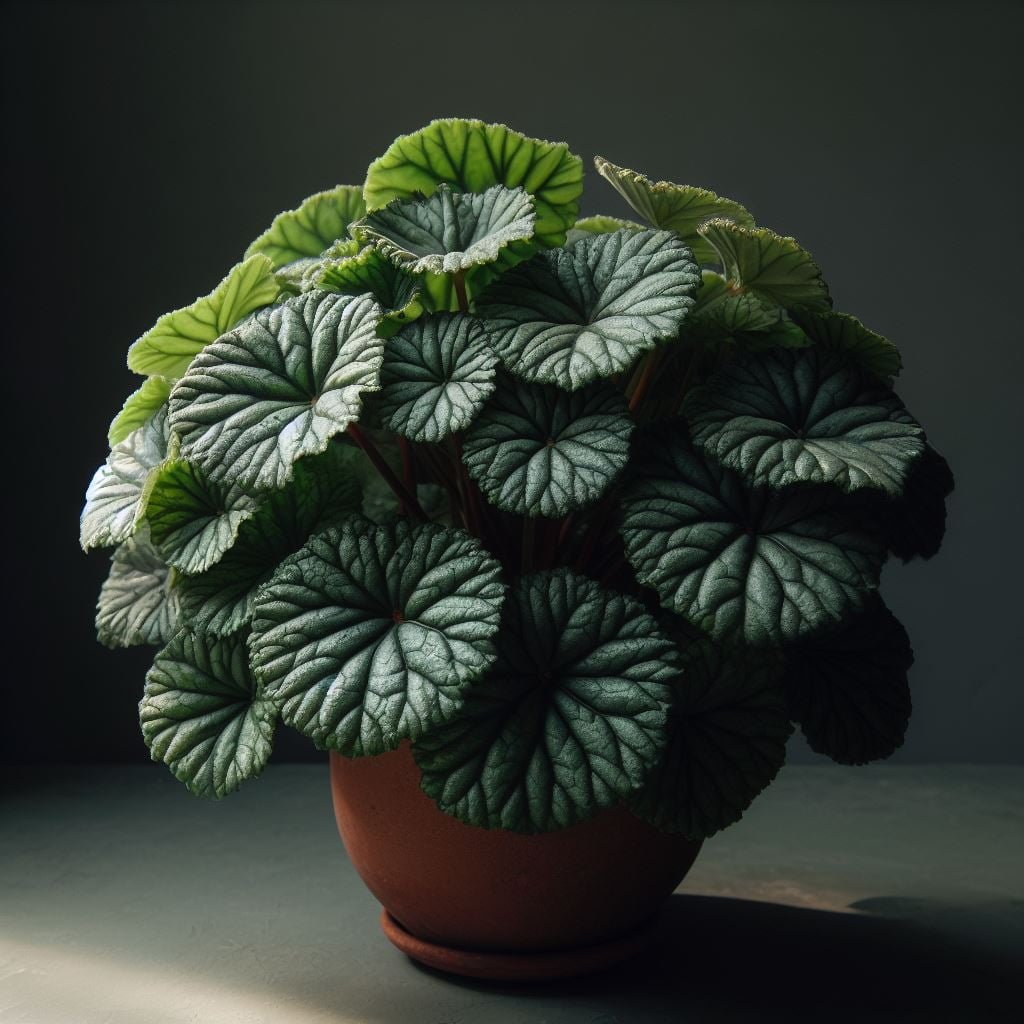
Importance of Pruning
Pruning is a valuable practice for maintaining the shape and health of Begonia Dregei. Regularly removing spent flowers and trimming leggy stems promotes a bushier, more compact growth habit. Pruning also encourages the development of new foliage, enhancing the overall aesthetic appeal of the plant.
Pruning Techniques
Use clean, sharp scissors or pruning shears to make precise cuts. When removing spent flowers, make the cut just above a leaf node to encourage new growth. For shaping purposes, trim the stems back to the desired length, ensuring an even and well-balanced appearance. Regular, light pruning is preferable to heavy, infrequent pruning to avoid stressing the plant.
Propagation from Pruned Cuttings
Don’t discard the cuttings from pruning—they can be utilized for propagation. Stem cuttings with nodes have the potential to develop into new Begonia Dregei plants. Dip the cut ends in rooting hormone for increased success. This sustainable approach not only keeps your plant tidy but also allows you to expand your begonia collection.
Incorporating these pruning practices into your Begonia Dregei care routine contributes to a visually appealing and healthy plant. Regular attention to pruning needs ensures that your begonia remains a stunning focal point in your green space.
Begonia Dregei Propagation and Repotting
Propagation Techniques
Propagating Begonia Dregei can be a rewarding experience for plant enthusiasts. Stem cuttings with nodes are a popular method for creating new plants. Snip a healthy stem with at least one leaf and a node, dip it in rooting hormone, and plant it in a well-draining potting mix. Keep the soil consistently moist until roots develop. This method allows you to expand your begonia collection and share the beauty of Begonia Dregei with fellow plant enthusiasts.
Repotting Schedule
Repotting is an essential aspect of Begonia Dregei care, ensuring the plant has adequate space to grow and access to fresh nutrients. Aim to repot your begonia every 1-2 years or when it outgrows its current container. During repotting, examine the roots for signs of disease or rot, trim if necessary, and place the plant in fresh potting mix. This practice promotes healthy growth and prevents issues associated with root-bound conditions.
Benefits of Regular Repotting
Regular repotting not only provides a new growing environment for Begonia Dregei but also allows you to inspect the plant closely. It offers an opportunity to refresh the soil, removing any accumulated salts or impurities. Additionally, repotting allows you to address any root-related issues promptly, contributing to the overall well-being of the plant.
Begonia Dregei Seasonal Care
Seasonal Adjustments
Adapting care practices based on the changing seasons is crucial for the well-being of Begonia Dregei. During the active growing seasons of spring and summer, increase watering frequency and fertilize every 4-6 weeks to support robust growth. In contrast, as the plant enters its dormant phase in fall and winter, reduce watering and fertilizing to accommodate the slowed metabolic activity. Paying attention to seasonal cues ensures that your Begonia Dregei receives the appropriate care year-round.
Protective Measures in Winter
As temperatures drop in winter, protect your Begonia Dregei from drafts and sudden temperature fluctuations. Consider moving it away from windows or using a curtain as a buffer against chilly drafts. Providing a stable and slightly warmer environment during the colder months helps prevent stress on the plant. Additionally, be mindful of humidity levels, as indoor heating systems can create dry conditions that may impact the begonia’s well-being.
Monitoring Seasonal Changes
Observing your Begonia Dregei’s response to seasonal changes is key to providing optimal care. Pay attention to any adjustments in watering needs, growth patterns, or leaf coloration. By staying attuned to these cues, you can tailor your care routine accordingly, fostering a healthy and resilient plant throughout the year.
Begonia Dregei Companion Plants
Selecting the right companion plants for your Begonia Dregei enhances the overall aesthetic of your garden and contributes to a harmonious growing environment. Opt for shade-loving plants that share similar moisture and soil preferences. Consider pairing Begonia Dregei with ferns, hostas, or other begonia varieties. This creates a visually appealing arrangement while ensuring that each plant thrives in its chosen setting.
Companion Planting Benefits
Companion planting offers various benefits, such as pest control and improved soil health. Some plants naturally repel pests that might affect Begonia Dregei, creating a protective barrier. Additionally, certain companion plants contribute to soil nutrient balance and moisture retention, creating a favorable microclimate. Thoughtful companion planting is a sustainable and visually pleasing strategy for enhancing your garden’s overall vitality.
Avoiding Competition
While selecting companion plants, consider their growth habits and space requirements. Avoid plants that may compete aggressively for resources, such as nutrients and sunlight. Ensuring each plant has ample space to grow and thrive contributes to a balanced and well-maintained garden. Regular monitoring and adjustments to the arrangement help create a harmonious ecosystem for your Begonia Dregei and its companions.
| Companion Plant | Characteristics |
|---|---|
| Ferns | Shade-loving, add a lush and feathery texture to the arrangement. |
| Hostas | Thrive in shade, offer a variety of leaf shapes and sizes, complementing Begonia Dregei’s foliage. |
| Other Begonia Varieties | Similar care requirements, create a cohesive display of different begonia species. |
| Impatiens | Shade-loving, vibrant blooms add a pop of color, contrasting with Begonia Dregei’s subtle flowers. |
| Heuchera (Coral Bells) | Tolerate shade well, diverse foliage colors and shapes, add visual interest and contrast. |
If you’re thinking of extending your begonia plant family, read up on begonia chloroneura care and begonia foliosa care to help you decide on the next addition to your squad.
These companion plants not only create an aesthetically pleasing garden but also contribute to the overall well-being of Begonia Dregei. Each selection complements the begonia’s unique characteristics while fostering a balanced and thriving plant community.
Pest Control Tips for Begonia Dregei
Common Pests
While Begonia Dregei is a hardy plant, it can occasionally fall prey to common pests. Keep an eye out for aphids, mealybugs, and spider mites. Regularly inspect the undersides of leaves, where pests often hide. To deter infestations, periodically wash your begonia’s foliage with a gentle spray of water, disrupting pests and preventing them from establishing colonies.
Natural Remedies
For a more eco-friendly approach to pest control, consider using natural remedies. Introduce beneficial insects such as ladybugs or predatory mites, which feed on harmful pests. Neem oil is also an effective natural insecticide that helps combat various pests while being gentle on your Begonia Dregei. Avoid harsh chemical treatments that may harm both pests and beneficial insects.
Common Pests and Remedies
| Pest | Symptoms | Control Measures |
|---|---|---|
| Aphids | Curling leaves, sticky residue (honeydew). | Wash foliage with soapy water or apply neem oil. |
| Mealybugs | White, cotton-like masses on leaves and stems. | Remove with a cotton swab dipped in rubbing alcohol. |
| Spider Mites | Fine webbing, stippled or discolored leaves. | Introduce predatory mites or wash with water regularly. |
Regular monitoring and prompt action are key to maintaining a pest-free environment for your Begonia Dregei.
Reviving a Sick or Wilting Begonia Dregei
Identification of Issues
If your Begonia Dregei shows signs of wilting or decline, swift action is essential. Inspect the soil for overwatering or underwatering issues, and check for pests on the leaves and stems. Addressing the root cause promptly is crucial for successful revival.
Wilting Due to Overwatering
If overwatering is the issue, allow the soil to dry out before resuming a controlled watering schedule. Trim any affected, rotting roots and repot the begonia in fresh, well-draining soil. Ensure the pot has drainage holes to prevent waterlogged conditions.
Wilting Due to Underwatering
For underwatering, increase watering frequency and ensure the soil remains consistently moist. Trim any damaged or wilted leaves, and consider placing the plant in a more humid environment to aid recovery.
Care Tip: Regularly monitor your Begonia Dregei’s moisture levels, adjust watering based on seasonal changes, and be proactive in addressing any signs of stress to maintain a thriving and resilient plant.
Conclusion
In conclusion, cultivating and caring for Begonia Dregei can be a rewarding endeavor. This unique plant, with its captivating foliage and adaptable nature, adds a touch of elegance to both indoor and outdoor spaces. By providing the right balance of light, water, and nutrients, and addressing issues promptly, you can enjoy the beauty of Begonia Dregei as it flourishes in your garden or living space.
FAQs
Is Begonia Dregei suitable for beginners?
Begonia Dregei is generally considered suitable for beginners due to its hardy nature and adaptability. With proper care and attention to its specific needs, even novice plant enthusiasts can successfully cultivate and enjoy this unique begonia.
How often should I fertilize Begonia Dregei?
During the active growing season in spring and summer, fertilize Begonia Dregei every 4-6 weeks with a balanced liquid fertilizer. In winter, reduce the frequency of fertilizing to accommodate the plant’s slowed metabolic activity.
Can Begonia Dregei be grown outdoors?
Yes, Begonia Dregei can be grown outdoors, but it prefers shaded or filtered sunlight. Ensure it is protected from direct sun exposure to prevent leaf burn. In regions with mild climates, it can thrive in garden beds or containers.
Is Begonia Dregei prone to any specific diseases?
While Begonia Dregei is generally resilient, it can be susceptible to root rot if subjected to overwatering. To prevent this, use well-draining soil and adjust your watering routine accordingly. Regularly inspect the roots during repotting for signs of disease.

Writer/Green Thumb/Explorer – Rooted deep in the rich soils of Devon, I’ve cultivated a vast expertise in plant care, helping greenery thrive in homes across the UK. When I’m not crafting detailed plant care guides, I’m journeying through the lush landscapes of the West Country, unearthing nature’s secrets and sharing them with fellow plant enthusiasts. Every leaf has a story, and I’m here to tell it.





